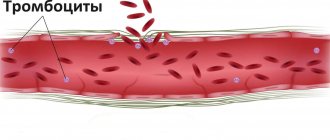Mental retardation is the only official designation for the altered nature of mental development in children, which is associated with the presence of a difference between mental and chronological age and a low level of intellectual and speech development compared to peers. Previously, the term “oligophrenia” was used and three stages were distinguished:
- debility;
- imbecility;
- idiocy.
The last is the most severe stage, and debility is mild mental retardation. Currently, these terms are only partially preserved in the medical literature and are excluded from official diagnosis. However, the types of mental retardation in children are not limited to this, since there is also an atypical form of autism with mental retardation.
There are several stages of mental retardation in children
What is oligophrenia
Scientists have been conducting research for a long time and trying to identify what mental retardation is. It is very important to distinguish it from acquired mental disorders. As the patient ages with dementia (one of the forms of dementia), as well as due to the action of certain negative factors, mental activity decreases. With oligophrenia, there is a clear underdevelopment of the intellect and psyche (that is, the patient does not develop according to his real age).
This term was discovered not so long ago. Previously, all patients with such deviations were given one general diagnosis - dementia. Oligophrenia is quite common and is diagnosed in children under 3 years of age. It is worth noting that boys are more susceptible to this disease. The insidiousness of the disease lies in the difficulty of diagnosis in the early stages. Very often, disorders are discovered in advanced stages, when it is already difficult to help the child with anything.
According to statistics, oligophrenia is more often diagnosed in schoolchildren and students. At a certain age, when entering school or university, you must pass tests. If a person cannot cope with them, doctors diagnose mental development disorders and send them for additional examination to specialists (speech therapist, neurologist, etc.).
Classification of oligophrenia
For a long time, doctors distinguished three main degrees of mental retardation: debility, idiocy and imbecility. However, such forms of the disease were considered incorrect, and over time a ban was introduced on them. Today there is a special Medical Classification of Diseases, according to which oligophrenia corresponds to certain levels of manifestation of mental disorders.
The disease is divided into two main forms:
- differentiated (it is possible to establish the main signs of the development of oligophrenia in children);
- undifferentiated (it is impossible to establish the nature of the disease).
There are several stages of the disease, which are determined based on basic indicators of intelligence:
- With mild mental retardation, the child does not score more than 50-70 points.
- The second is no more than 50 points.
- In severe cases, the indicator does not exceed 30.
- In advanced forms (profound mental retardation), intelligence does not reach 20.
To date, there is no exact classification of oligophrenia. When assessing the patient’s condition, the doctor takes into account many factors (correct thinking, character traits, how strong is the interest in the world around him, etc.).
It is worth noting that a healthy child easily answers test questions when determining the IQ at the level of automaticity, but the patient hesitates to answer.
Diagnosis F70 decoding
The code F70XX is used to indicate U.O. The fourth character in this code indicates a weak severity of violations in general behavior. 0 - indicates a complete absence of behavioral disturbances, 1 - the presence of significant disturbances that require timely care and treatment, 8 - other disturbances in the child’s behavior occur , 9 - there are no indications of disturbances in the individual’s behavior. If the main cause and condition for the development of backwardness is known, then an additional fifth character is also used in the decoding.
A70.01 - a disease that was provoked by an infectious virus (prenatal infection, intoxication of the human body or postnatal infection);- F70.02 - remaining occurs due to injury or due to exposure to a physical agent (mechanical injury or asphyxia during childbirth, hypoxia and postnatal injury);
- F 70.03 - retardation, which occurs due to a rare disease, inherited, which is associated with a disorder of amino acid metabolism, phenylketonuria;
- F 70.04 - mental retardation occurs in conjunction with chromosomal disorders;
- F 70.05 and F 70.06 - a disease caused by hyperthyroidism and hypothyroidism;
- F 70.07 - retardation occurs due to prematurity;
- F 70.08 - the disease in this case occurs due to other subtle causes;
- F 70.09 - backwardness arose for unspecified reasons.
Signs of pathology
The presence of mental retardation negatively affects mental processes, especially the cognitive skills of the baby.
A diagnosis of retardation in a child, the decoding of which indicates an IQ of 50-70 points, is not a death sentence. A child with identified problems begins to crawl, walk, sit and talk much later, but he is capable of learning and can acquire normal communication skills. In some cases there are defects in physical as well as sensory development.
But even under normal developmental conditions, a mild degree of retardation does not give the patient the opportunity to understand the meaning of proverbs and metaphors. They tend to take everything they read and say from adults literally. Children cannot give a complete description of the objects in front of them; they may get confused in words, interjections and general gestures.
It will be very difficult for a child to retell a read text or a retelling. Re-reading the text can have a positive effect on the situation, but the subtext, if there is one, will remain undisclosed. The process of solving problems with arithmetic values and involving two or more actions will become inaccessible or extremely difficult. A mild degree is characterized by a complete lack of a sense of humor, fantasy, and imagination.
Causes and provoking factors
Oligophrenia in children can be congenital or acquired. In the second case, the risk of genetic transmission is very low, so many scientists do not consider this pathology to be hereditary. As a rule, it develops due to a combination of many negative factors. Among the main reasons are:
Hereditary factors
As a rule, they play a decisive role in the congenital forms of many diseases. First of all, this concerns gene and chromosomal abnormalities (Down disease, Patau syndrome, cat cry, Alfie, fragile chromosome, etc.). Under the influence of these factors, chromosomal defects are observed, as a result of which the normal structure of the brain is disrupted. Hereditary causes also include:
- lack of iodine during fetal development;
- disturbances in the natural metabolism of phenylalanine, which is an essential amino acid;
- insufficient amount of the enzyme responsible for the breakdown of arginine;
- lack of lysosomal enzyme (tripeptidyl peptidase).
Therefore, it is very important to carry out the necessary diagnostics even before pregnancy to make sure that one of the predisposing factors to the development of oligophrenia is absent.
Antenatal
This group includes reasons that affect the normal development of the fetus in the womb:
- chronic lack of oxygen;
- placental insufficiency;
- oligophrenia, which often develops against the background of past infections (syphilis, toxoplasmosis, etc.);
- rubella suffered during pregnancy;
- alcohol abuse, smoking + drugs;
- long-term use of medications that negatively affect the condition of the fetus (antibiotics, Aspirin, etc.);
- radiation treatment;
- premature birth;
- severe form of gestosis.
In order to reduce the risk of developing oligophrenia in a child, a pregnant woman needs to especially carefully monitor her health and follow all medical recommendations.
Postnatal
Very often, this disease is diagnosed immediately after birth (due to birth trauma) or during the first years of the baby’s life. This is due to the following reasons:
- acute lack of oxygen during labor;
- the use of forceps or a vacuum extractor, which entails a traumatic brain injury to the baby;
- Rh conflict between mother and fetus;
- bacterial or viral form of meningitis or encephalitis suffered before 3 years of age;
- the presence of malignant tumors in the brain;
- severe measles or scarlet fever under 3 years of age.
The main reasons for the development of oligophrenia in children are listed above. It is worth noting that hereditary factors cannot be influenced in any way, but it is possible to reduce the risk of developing postnatal and antenatal factors. To do this, you need to very carefully monitor your health during pregnancy and follow all medical recommendations.
Symptoms of oligophrenia
This disease is not independent; it is always accompanied by a number of concomitant diseases. Very often, such patients experience disturbances in speech and motor functions, and the emotional system suffers greatly. The main symptoms of various forms of mental retardation in children are:
- partial or complete absence of an abstract form of thinking (such patients in adulthood are similar to 2-3 year old children, they think concretely and situationally);
- severe mental retardation (deterioration of memory, speech, ability to generalize and perceive, impaired motor and emotional activity is observed);
- poorly developed speech (in everyday life a child with mental retardation has up to several dozen words, he cannot fully compose sentences or read, and in most cases such patients remain illiterate);
- inability to remember names, dates, etc.;
- inability to navigate in everyday situations, when mental retardation is complemented by the inability to perform the most primitive actions (going to the store, choosing clothes, etc.);
- severe delay in physical development (an adult may outwardly resemble a teenager).
It is worth noting that intelligence decreases gradually, and its clear manifestation is observed only at school age. Before 12 months, a congenital form of oligophrenia is most often diagnosed, which also manifests itself in the form of delayed development of the baby. Symptoms of oligophrenia for newborns and children up to one year are as follows:
- anomalies in the structure of the face, head, neck;
- congenital pathologies of internal organs;
- phenylketonuria;
- inability to hold up one's head, sit, crawl, or perform other age-appropriate activities.
It is very important to consult a doctor at the first alarming symptoms, who will conduct a comprehensive diagnosis and select an effective treatment regimen.
What are the features of ideas in mild mental retardation?
They are mainly associated with the predominance of specifics, and thinking itself is object-oriented. Therefore, such children perceive time as the hands of a clock, and body temperature as the size of a column of mercury. They also tend to snatch from the entire array of information only what is enough for them to develop a primitive understanding. At the same time, the situation can be controlled. The author of this text had the opportunity to observe the reaction of a young man who graduated from a special school and got a job at a construction site in the Moscow region. Entering the metro, he looked a little confused, but no more than any provincial who does not find himself in Moscow very often. But the need to purchase a payment card puzzled him. He stood in line simply because he noticed that most of those entering were getting there. But he didn’t know what to do next, and the question “How many trips?” completely unsettled him. Out of confusion, he began to lay out all the money he had. However, the metro employee turned out to be conscientious and did not sell the guy extra cards. She sold him a coupon card for only one trip. He took the remaining money, went to the turnstile and easily used the coupon. Why? Difficulties were caused by attempts to understand that it is not just necessary to pay for travel, but to buy something and use it somehow. And that something could be a “trip.” “How many trips do you need?” How could this strange thing become an analogue of money - he still understood, but an analogue of travel? This goes beyond imagination. But he immediately noticed what other passengers were doing with these payment cards, and did the same himself.
Worth seeing: Dissociative Fugue
If the question of how to determine mental retardation in a child is asked by parents, then this is not entirely clear. The presence of such will actually determine itself.
It will not be possible to hide a child’s mental retardation: sooner or later it will manifest itself
Diagnostics
Symptoms of oligophrenia always appear very clearly. It is necessary to carry out differential diagnosis to exclude similar diseases. The first step is diagnosis; psychological tests by which a specialist evaluates the child’s speech and mental development and determines his IQ level. Such techniques are used for children from 3 years old. For younger patients, the diagnosis of mental retardation includes:
- MRI and CT of the brain;
- detailed study of the karyotype;
- memory test;
- laboratory test of the newborn's blood for phenylketonuria or hypothyroidism;
- brain encephalography;
- Ultrasound of internal organs;
- research on genetic factors;
- tests for possible congenital infectious diseases.
Early diagnosis allows for timely detection of pathology and initiation of treatment. Delaying the situation only leads to a worsening of the patient’s condition and entails serious consequences. A neurologist studies the psychological sphere.
Nursing
Proper care for patients with oligophrenia alleviates the condition of children. It can be provided by parents and teachers of special (correctional) educational institutions themselves. It includes:
- attention;
- support;
- constant supervision;
- friendly attitude;
- positive motivation;
- training in basic self-care skills.
This is the only way to raise and raise a child suffering from mental retardation. With proper and regular care and with a mild degree of the disease, comforting forecasts for the future are possible.
Culture. In many works of fiction, authors make their main character an oligophrenic: W. Groom “Forrest Gump”, I. Pohl “An Idiot’s Journey”, D. Keyes “Flowers for Algernon”, D. Steinbeck “Of Mice and Men”, D. Lessing “ Fifth child”, A. Kuprin “Blessed”.
Treatment and rehabilitation for oligophrenia
Unfortunately, this disease is considered incurable. Treatment for oligophrenia is prescribed based on the results of a comprehensive examination, when the doctor accurately determines the severity of the disease.
In the early stages, drug therapy is used. It is symptomatic in nature and helps eliminate the root causes and smooth out the unpleasant signs of the disease. The following groups of drugs are used for this:
- Tranquilizers (Phenazepam, Diazepam, etc.).
- Neuroleptics (Relatin, etc.).
- Hormones (Thyroid, etc.).
- Herbal medicines that have a positive effect on the process of oxygen supply to the brain and metabolism (Phesam, Piracetam, etc.).
- Vitamins and microelements (group B, glutamic acid).
This complex helps improve the patient’s mental state, stabilizes his emotional background, and relieves aggressiveness. It is worth noting that the drugs have a number of side symptoms:
- impairment of motor activity;
- sleep function disorder;
- deterioration of vision and memory;
- complete or partial rigidity.
This must be taken into account before starting to take medications. Some doctors advise using traditional medicine, which are more gentle. These include decoctions and infusions of medicinal plants (valerian root, ginseng, etc.).
Unfortunately, homeopathy does not always help get rid of unpleasant symptoms; it is used only after preliminary consultation with your doctor.
Correction
Be sure to carry out psychological correction (helps stabilize the patient’s behavior), and take classes with a speech therapist (this improves spoken language). Doctors also prescribe a complex of physical therapy and massage. Such measures develop the skills of walking, sitting, etc., they are carried out in courses of 10 days.
Such children are treated by experienced specialists (neurologist, psychologist, etc.). You must follow their recommendations and not miss classes. In addition, you will need to consolidate the acquired knowledge at home (training, classes for the development of speech and motor skills, etc.).
Proper care of a child diagnosed with mental retardation is very important. It will require a lot of attention and care from parents. The right approach helps alleviate the patient's condition.
It is important to remember that if a child is raised under the influence of unfavorable factors, the disease will only worsen and the child will become aggressive towards others. To improve memory and speech, you need to regularly conduct developmental activities, read books to your child, etc. By following all medical recommendations, the chances of stabilizing the condition of a patient with mental retardation increase.
Under no circumstances should you shout or punish a child; this will only worsen the situation. Remember that the child is not to blame for his illness; he needs to be provided with the most stable psychological environment.
It is necessary to properly teach such a patient basic self-care skills. Most of these children are trained in specialized schools, kindergartens, etc. This helps avoid ridicule and worsening the condition.
Kinds
There is more than one classification of oligophrenia, each of which has its own advantages and disadvantages.
Traditional (according to severity)
Until recently, doctors distinguished the following forms of the disease:
- oligophrenia in the stage of debility, characterized by a mild clinical picture;
- oligophrenia in the degree of imbecility, characterized by more pronounced and noticeable symptoms of the disease;
- idiocy is an extremely pronounced degree.
However, recently in child psychiatry they are increasingly using a different classification, in which mental retardation is distributed according to severity based on IQ level.
According to ICD-10
The International Classification of Diseases, tenth revision, was carried out in 1989. According to it, the stages of oligophrenia are determined as follows.
- I degree
This is a mild degree, corresponding to debility according to the previous classification. IQ = 50-69. Children have physical underdevelopment, poor memory, problems with logical and abstract thinking, instability of attention, difficulties in carrying out certain purposeful actions, behavioral disorders, emotional instability, and greater suggestibility. It is diagnosed mainly at school age.
- II degree
This is an average degree, moderate, slightly expressed imbecility. IQ = 35-50. There is minimal independent thinking, sleep and appetite disorders, rapid fatigue, irritability, and developmental delays become noticeable at an early age. Such children have a limited vocabulary. There are disturbances in fine motor skills and low ability to master simple actions.
- III degree
This is a severe degree, significantly pronounced imbecility. IQ = 20-35. The clinical picture is almost the same as that of the previous form of the disease, but all disorders are more pronounced.
- IV degree
This is a deep degree, corresponding to idiocy. IQ = less than 20. Accompanied by a lack of thinking and speech abilities. Diagnosed at birth or immediately after it. Since there is significant damage to the central nervous system, such children do not respond to external stimuli, do not perceive speech, do not recognize their parents, do not experience or express emotions (no facial expressions), do not coordinate movements, do not touch objects, do not feel taste, smell, and even pain. A characteristic symptom is repeated mechanical repetition of one movement or a state of complete immobility for a long period of time.
Now in most medical institutions the diagnosis of oligophrenia is made to children precisely in accordance with this classification.
Pevzner classification
M. S. Pevzner, based on clinical and psychological-pedagogical research, was able to determine the structure of defects in mental retardation and develop a detailed classification. This is a qualitative typology of conditions that extends to the system of correctional, educational and medical measures. In the 70s of the 20th century, the scientist identified the following types of oligophrenia:
- uncomplicated;
- accompanied by neurodynamic disorders;
- with analyzer disorders;
- complicated oligophrenia with psychopathic forms of behavior;
- with pronounced frontal (mental) insufficiency.
The last 4, complicated forms of oligophrenia require the greatest attention from doctors and parents, since their symptoms are most pronounced and prevent the child from further social adaptation. To help him, you need to diagnose the disease in time and undergo the appropriate course of treatment.
A fact from the past. In 1967, WHO was very concerned about the increasing number of children suffering from mental retardation in many countries and created a special Expert Committee on mental retardation.
Forecast
It all depends on the severity of oligophrenia. Doctors can give a favorable prognosis if a mild form of mental retardation is detected in a timely manner. With proper treatment, a child can learn to cope with basic everyday tasks, this increases the level of proper social adaptation. As adults, they can even master certain professions.
If the disease is not treated correctly, the disorders begin to progress rapidly, the consequences of mental retardation are severe:
- lifelong mental retardation;
- disability;
- manifestation of severe mental disorders.
Such patients require professional medical supervision and are placed in specialized centers.
Symptoms
Mental retardation has the following symptoms, which may worsen depending on the severity of the disease:
- decreased intellectual development;
- complex functions of thinking, such as generalization, establishing cause-and-effect relationships, are underdeveloped;
- general systemic underdevelopment of speech, which is manifested by late speech, delay in the development of phrasal speech, significant difficulties in learning to write and read;
- attention is impaired;
- perception is impaired;
- inability to think critically, underdeveloped or absent abstract thinking;
- memory has low productivity;
- low activity in cognition;
- the emotional-volitional sphere is disturbed.









